Table of Contents
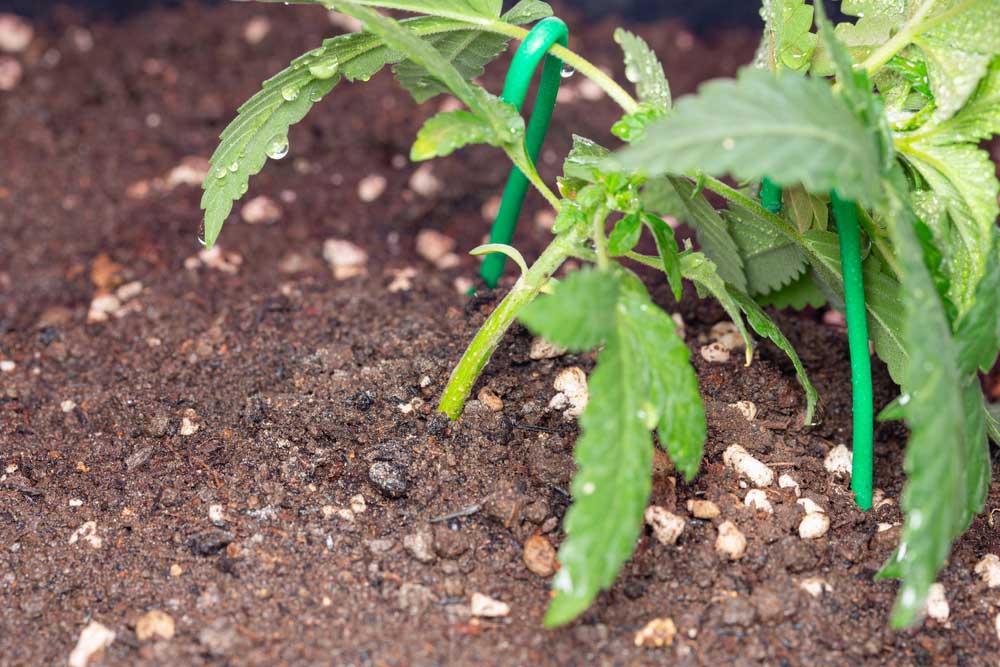
There are some techniques that you can use in growing your cannabis plants. LST or Low-Stress Training is one of the best techniques so far. You can use it to increase your harvest and limit the height of your plants. If you have been dealing with poor yields, LST will be certainly a good solution.
Most marijuana growers train their cannabis plants. There are ways to do it: the high stress and low-stress methods.
Low-Stress Training will gently manipulate your plants. High-Stress Training includes more aggressive techniques. Such techniques can cause significant stress to your plants.
LST is exactly what it sounds like. It will not cause stress or even slight damage to your plants. It is a fun way to train indoor plants. In fact, many indoor growers love to use LST.
There are some distinct kinds of low-stress training. These are low-stress training, the screen of green or SCROG, and the sea of green or SOG.
Low-stress training mainly involves softly bending the cannabis plants while they grow. You can just tie down the longer branches. Such process will continue during the whole vegetative cycle in the growth of cannabis plants.
Tying the plants allows the hormone called auxin to spread all over the plant. Auxin is highly responsible for the plants’ growth. It will result in more buds trained to develop in a rounded pattern instead of just being straight with one big cola.
When topping cannabis plants, you need to remove the apical bud where concentration and synthesis of auxin mostly occurs. Cannabis plants stress themselves that enables them to produce new sprouts on the stem. It forms new growth which will be the next apical bud. This bud will grow and soar to the sky.
LST helps in stimulating the growth close to the bottom by tricking the plants rather than chopping them. When something happens to the plants and the bud near the light gets jammed, plants try to move all over that something. If they can’t, the new growth forms on the stem and will try sending a new shoot upward going to the light.
When you use LST, you need to tie the plants down to confuse them. That will result in increased auxin production. Many cannabis growers prefer to train further their plants while they grow older. LST is best to use while the plants are young because auxin develops in the roots and will continue through the entire growth stages.
Continuous plant training is helpful in bringing every apical tip down to encourage new growth. Each time you bring down a tip, the cannabis plants will be more confused. While the new growth tries to get closer to the light, pulling it back down in less than 90 degrees will force the auxin to flow once more. It will happen again and again.
All cannabis strains will virtually adjust themselves to LST. More cannabis growers choose indica and indica-dominant strains because they enhance growth on the normally fruitless side branches.
LST is also applicable to sativa and sativa-dominant strains. These cannabis strains are great to grow if your grow is wider and larger. Their strong lateral branches can produce great-looking buds.
You can try several strains including White Widow, Super Silver Haze, and Blueberry. The choices are limitless.
But, what about the autoflowering strains? Unlike the ordinary marijuana plants, autoflowering plants will depend entirely on age. Autoflowering cannabis plants will still need light to grow, but it will be the same even when they matured or when they begin producing buds. Due to that, autoflowering cannabis strains can grow and reach their full maturity state in 2 to 3 months.
However, it does not mean the LST techniques like SOG will be ineffective in autoflowering strains. Also, it does not mean you should never cut these plants. Shrubs need time to recuperate from any invasive procedure, which the autoflowering strains do not have.
LST can be an excellent way of developing the bushy and flat plants even in a small grow space. More importantly, it is an effective way of getting massive yields in every harvest. While LST sounds intimidating, don’t hesitate to try it once because that will totally change your belief about it. For sure, you will be so surprised at what the LST can contribute to your operations.
Low-stress training is somewhat beneficial to cannabis plants. Here are the potential benefits you can enjoy by using LST:
HST or high-stress training is different from LST. Their names will reveal it to you. HST or high-stress training includes trimming the upper leaves called “topping”. Trimming them will let the light penetrate even the leaves on the bottom.
High-Stress Training may sound pleasing to your ears, but it can be somewhat risky for your plants. Its stressful effect will encourage most of the smaller branches to grow. As a result, your plants will have tiny popcorn-like buds, not the large colas. In fact, extreme stress can make your cannabis plants become hermaphrodite.
However, Low-Stress Training induces low stress which is safer for cannabis plants. When you do it right, LST will not even cause any stress to your cannabis plants anymore.
Low-Stress Training is not hostile for the plants. Likewise, it does not involve trimming any part of your cannabis plants. Instead, you just need to stretch the upper branches out and tie them loose in a more suitable position.
It will form a smoother surface. That means the buds will receive an equal volume of light. Thus, you can expect your buds to be more delicious and bigger when you harvest them.
However, LST is not just all about increasing your plants’ exposure to the light. The truth is, LST triggers a chemical reaction on your plants. This chemical reaction will encourage your marijuana plants to produce more colas when the flowering time kicks in. More colas mean more buds to collect after two to three months.
When you bend and tie down the branches and stems of your plants, they will assume they have lost those shoots completely. Due to this, your cannabis plants will produce chemicals that will spread all over their body.
These chemicals are responsible for increased cola production and extra growth sites development. The effect of these chemicals will eventually lead to increased bud production. That means a more decent yield each time you harvest. It’s why most cannabis growers like LST. This way of training cannabis plants is certainly the cheapest way to increase your yields.
LST will make you more flexible by doing it at the right time and place. It’s too late to do it when the plants are late bloomers and when their stems are extremely firm to bend.
Microgrowers with smaller grow spaces often use LST early to gain more in every harvest. Many indoor growers train their plants throughout the vegetative phase while the shoots are pliable and green. The sooner LST begins, the better the result will be.
If you’re serious in maximizing your yields while keeping the flowers in their sweet spot, then you must use a ScrOG on your grow-up. It’s the only viable choice you have if you choose to train your plants using LST.
LST is not only for indoor cannabis growers. The roots of espalier are within the outdoor cannabis cultivation. Outdoor cannabis growers, particularly those who live in areas with northern European-like climates, are successful in using LST.
The plants will be smaller but more productive than they will if you don’t train them using LST. Removing the apical domination of cannabis plants to redirect the growth hormones to several shots instead of one is a great strategy. It will be effective whether you use it indoors or outdoors.
You just need a few things in getting started with LST. In fact, you can start by having only a minimalist kit. The soft ties of your plants are the leading essential. You need them for holding the shoots and keeping them in place.
There are more options for bracing the bend. These include drilling the holes all over the lip of your pots. You can use bamboo stakes, too. However, training your cannabis plants using LST is easier to do if you use wooden skewers. They must be roughly 30 centimeters long for hassle-free use.
Whatever you choose between those options, do not secure the shoots to the ground. That’s because some adjustments will be necessary while your grow progresses. Maybe, moving your plants is a must for some reasons. Also, you should have duct tape in your minimalist kit.
Helping your plants in preparing themselves for LST is important. That’s a crucial task to do aside from making sure that your plants are 100% ready for the process. Getting them prepared for this process is easy. All you need is to massage the branches and stems.
Plants need some kind of “warm-up” for a physical activity like humans. One of your options to “warm-up” them before LST is the method called massaging the branches and stems.
Some cannabis growers spend some minutes each day to massage the newly developed and young branches. Massaging will make them stronger and resistant to breaking when you try to flex them.
In massaging the branches and stems, you need to gently grab the stems between your fingers and lightly twist and bend them all over for a few seconds. You should do this per branch.
These little and soft movements will develop microfractures in the tissues of your plants. These microfractures promote sturdiness and healthy growth in plants. It is the same with the microdamage due to wind blows that occurs to plants cultivated outdoors.
When you massage your cannabis plants every day, you will notice significant changes sooner on your plants. They may likely have thicker stalks and sturdier lateral branches. These lateral branches will be more able to hold up a lot of bigger buds when the flowering time comes in.
While training cannabis sounds intimidating particularly to beginners, doing it is so easy. You’re just a few steps away from success in using LST:
Some cannabis growers out there prefer to wait a little longer until their plants have 5 sets. However, extra caution is necessary when doing that.
While cannabis plants are growing, their main stem will begin to become rigid. Therefore, bending the main stem, in that case, is more difficult to do unless you break it. You should not break it as it can stress and even damage your plant. When you break the stem, the plant will die.
Some people prefer hooks. They use it for hooking in the ground after you bend a branch. You can use anything.
However, your ties should be soft, so they won’t cut the branches and the leaves. Pipe cleaners are effective. You can tie them loose and adjust them while your plants grow.
Again, you can use hooks to secure in the ground. You can tie down your plants on a pot. Or, you can also secure them elsewhere.
This is the space between the final set of leaves and the second to the last set of leaves. Lightly tie this part and secure it to your chosen spot.
The bent part of your cannabis plants will begin to flex back up on the way to the light. It can take up to 8 hours, but you can shorten it by using under powerful lights. These lights can get the job done in just 3 hours.
Don’t tie your cannabis plants until the new leaves appear. In this way, much light will reach the main stem. When the new sets of leaves begin to form, tie them all over the pot until there’s no space left inside or all over the pot.
At this point, there must be new leaves which makes the stem bent horizontally all over the interior of the pot’s edge. You can use soft ties or metal hooks. In this time, more side branches must come in.
You can redo steps #6 and #7 while growth continues. This will help the side branches to form and grow further until they reach the light.
It will happen when your plants switch to the 12/12 light cycle.
Some cannabis growers out there turn the light off two days before they harvest. It means no light will touch their plants for the last 48 hours before the big days.
This will confuse the plants again. They will think they’re dying. That feeling will cause them to release the resin or THC in their system and distribute it to the well-formed buds. Therefore, you will see the buds having a beautiful crystalline look when you harvest them.
There are several various low-stress training methods. Also, many cultivators have their own approach. The best time for doing LST is when your plants already have 4 to 5 nodes. Smaller plants can’t handle the effect of LST. That’s because their roots are still fragile and may uproot when you try bending and training them.
Likewise, make sure your cannabis plants are not too old for LST. Older plants have tough woody branches which are less flexible and more prone to breakage.
In training cannabis, you can tie them down by using nylon cord or string. Before you begin, make sure there’s something besides you which can hold the string or nylon cord in place.
When training your cannabis plants using LST, you can make some tiny holes under the pot’s rim. Here, you can secure the nylon cord or string to the branches.
Note: Make sure the ties are loose. The branches will continuously develop even when you tie them. They need some space for the new tissues. The branches will suffocate and may fail to develop properly if tie them tightly.
You can do LST even while your plants are in the flowering stage. However, you must do it only within the first few weeks. During the flowering phase, your plants will tend to grow more rapidly. Therefore, you must keep them in shape.
Once you do this, avoid touching the new buds at all cost. Don’t worry in case you accidentally touched it once. This is hard to do but try not to make the same mistake again. Continuously train your plants using LST within 30 days.
Still, you need to check your plants for stray colas that may block the light or get too close to the source of light. Tie them back accordingly.
LST or Low-Stress Training is a good technique to use for some reasons. It is a nice option for cannabis growers who are on a tight budget because it just needs cheap materials like ties and bamboo sticks.
If your grow room has fewer light sources, using LST will be an inexpensive way to upgrade. If the grow space is too tight, LST will help you use that efficiently.
In fact, more great things will happen if you use Low-Stress Training with other training techniques. Combining LST with your preferred method will supercharge your marijuana plants. What you’ve learned today are just the basics.

Curious about growing weed in a healthy, effective way? Welcome to the realm of weed hydro! This method uses water instead of soil, delivering n
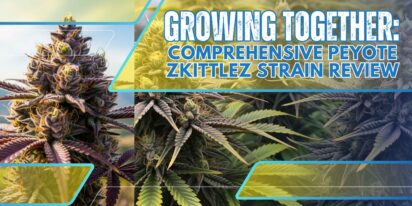
Peyote Zkittlez is a unique cannabis strain that has quickly gained dedicated followers among enthusiasts and patients alike. Its parentage—Zk
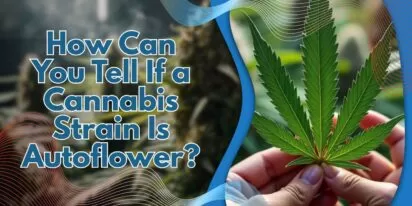
As growers, we want strains that work well, are strong, and are of good quality. Autoflowering cannabis strains are a big step forward for both

Pot growers always ask the same basic question: How much weed does a weed plant produce? The answer is complex and depends on a multitude of var

Ever had the room spin after a few hits? You're not alone. Figuring out how to prevent getting dizzy high can make your cannabis experience a wh
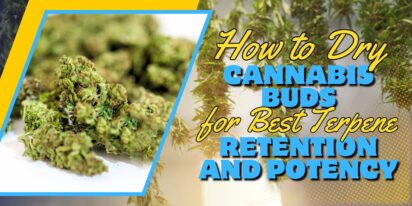
Drying cannabis properly is a critical process in preserving the plant's full aroma and flavor and its psychoactive abilities. Tampering with th

Ever caught yourself a bit too high and all of a sudden in need of being normal? Whether you're heading out for munchies or bumping into someone
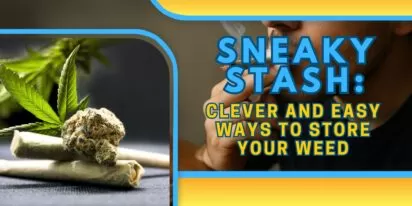
Looking for sage advice on how not to get pinched with weed without batting an eye? Attempting to protect your stash from gossipy roommates, sno
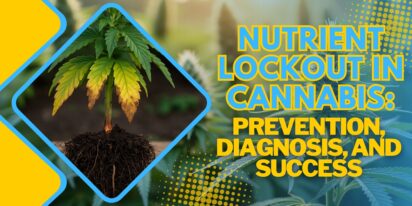
Nutrient lockout, also known as nutrient binding or chemical antagonism, is a significant issue in cannabis cultivation that negatively impacts
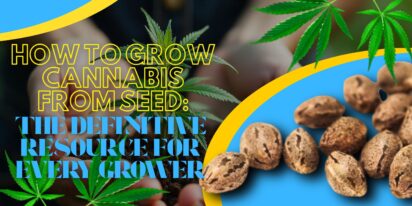
Germination is the most critical initial stage in growing healthy, high-quality cannabis plants. During germination, the dormant seed becomes a
Are You 18 Or Over?
By selecting “Continue”, you confirm that you are at least 18 years of age and legally permitted to access cannabis related content in your region.
By using Rocketseeds.com, you agree to our legal disclaimer.
Excellent blog here Also your website loads up very fast What web host are you using Can I get your affiliate link to your host I wish my web site loaded up as quickly as yours lol
Your writing is not only informative but also incredibly inspiring. You have a knack for sparking curiosity and encouraging critical thinking. Thank you for being such a positive influence!
Simply wish to say your article is as amazing The clearness in your post is just nice and i could assume youre an expert on this subject Well with your permission let me to grab your feed to keep updated with forthcoming post Thanks a million and please carry on the gratifying work
Somebody essentially lend a hand to make significantly articles Id state That is the very first time I frequented your website page and up to now I surprised with the research you made to make this actual submit amazing Wonderful task
Your blog is a beacon of light in the often murky waters of online content. Your thoughtful analysis and insightful commentary never fail to leave a lasting impression. Keep up the amazing work!
Thank you for the auspicious writeup It in fact was a amusement account it Look advanced to more added agreeable from you By the way how could we communicate
Your blog is a constant source of inspiration for me. Your passion for your subject matter shines through in every post, and it’s clear that you genuinely care about making a positive impact on your readers.
Your blog is a constant source of inspiration for me. Your passion for your subject matter is palpable, and it’s clear that you pour your heart and soul into every post. Keep up the incredible work!
Your articles never fail to captivate me. Each one is a testament to your expertise and dedication to your craft. Thank you for sharing your wisdom with the world.
Your blog is a testament to your dedication to your craft. Your commitment to excellence is evident in every aspect of your writing. Thank you for being such a positive influence in the online community.
Your writing has a way of resonating with me on a deep level. I appreciate the honesty and authenticity you bring to every post. Thank you for sharing your journey with us.
Your blog is a true gem in the world of online content. I’m continually impressed by the depth of your research and the clarity of your writing. Thank you for sharing your wisdom with us.
Hi i think that i saw you visited my web site thus i came to Return the favore Im attempting to find things to enhance my siteI suppose its ok to use a few of your ideas
Somebody essentially help to make significantly articles Id state This is the first time I frequented your web page and up to now I surprised with the research you made to make this actual post incredible Fantastic job
Usually I do not read article on blogs however I would like to say that this writeup very compelled me to take a look at and do so Your writing taste has been amazed me Thanks quite nice post
Your blog has quickly become one of my favorites. Your writing is both insightful and thought-provoking, and I always come away from your posts feeling inspired. Keep up the phenomenal work!
Every time I visit your website, I’m greeted with thought-provoking content and impeccable writing. You truly have a gift for articulating complex ideas in a clear and engaging manner.
Hey there You have done a fantastic job I will certainly digg it and personally recommend to my friends Im confident theyll be benefited from this site
I have read some excellent stuff here Definitely value bookmarking for revisiting I wonder how much effort you put to make the sort of excellent informative website
Nice blog here Also your site loads up very fast What host are you using Can I get your affiliate link to your host I wish my site loaded up as quickly as yours lol
What i do not understood is in truth how you are not actually a lot more smartlyliked than you may be now You are very intelligent You realize therefore significantly in the case of this topic produced me individually imagine it from numerous numerous angles Its like men and women dont seem to be fascinated until it is one thing to do with Woman gaga Your own stuffs nice All the time care for it up
Your blog is a beacon of light in the often murky waters of online content. Your thoughtful analysis and insightful commentary never fail to leave a lasting impression. Keep up the amazing work!
Your blog is a breath of fresh air in the often stagnant world of online content. Your thoughtful analysis and insightful commentary never fail to leave a lasting impression. Thank you for sharing your wisdom with us.
Your blog is a beacon of light in the often murky waters of online content. Your thoughtful analysis and insightful commentary never fail to leave a lasting impression. Keep up the amazing work!
Usually I do not read article on blogs however I would like to say that this writeup very compelled me to take a look at and do it Your writing style has been amazed me Thank you very nice article
Your writing has a way of resonating with me on a deep level. I appreciate the honesty and authenticity you bring to every post. Thank you for sharing your journey with us.
This hydroponics guide is quite the buzz, seriously! Who knew growing weed without dirt could be so complicated yet potentially rewarding? The breakdown of systems like DWC and NFT is helpful, though I suspect my cat might confuse the air pump for a toy. The idea of cleaner buds is tempting, especially since explaining hydro weed to my non-growing friends might get messy. And the bit about potential dizziness from hydro weed? Perfect, now I have an excuse for why I always stumble a bit after a grow session. Still, the promise of faster grows and higher yields is hard to ignore, even if it means more trips to the pH meter than to the coffee shop. Overall, a cultivating read for the curious grower!